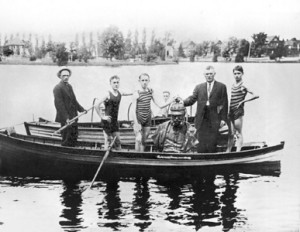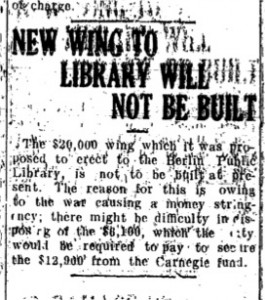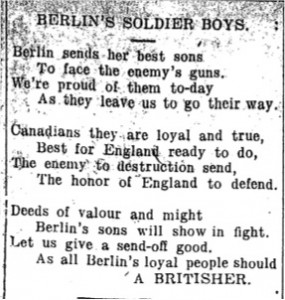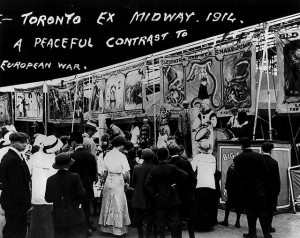Numerous articles were reprinted in the Waterloo Region newspapers that discussed accusations against German-Canadians.In London, Ontario, The London Advertiser denounced accusations that German residents were wrecking trains and spying for the Kaiser, stressing that most German-Canadians had been born in Canada and were loyal to the British Empire. The Montreal Herald reminded their readers, “we do not need to fight these battles over again by saying things to each other,” in an attempt to reduce hostilities towards German-Canadians in Quebec. Despite the inclusion of all these articles, and other articles in Waterloo Region newspapers, hostility was still present in Waterloo Region towards German-Canadians.
On 27 August, the bust of Kaiser Wilhelm I was removed from its pedestal in Victoria Park, Berlin and thrown into the park lake. The Kaiser bust was erected in 1897, one year after the park was opened and a statue of Queen Victoria was erected in 1909. The statue of the Queen was left unmarked in August 1914. This act of vandalism greatly upset the German-Canadians in the region and outraged Mayor Euler who stated that “the deed was one of the most outrageous ever committed in the city” and that the city’s citizens were undeserving of this humiliation. Prior to this vandalism, a German flag had also been destroyed at the park, indicating that the hostility towards German-Canadians, and residents of German origin, was increasing in the region.
(“Insulting German Canadians (The London Advertiser),” Berlin Daily Telegraph, 15 August 1914, “Our German Citizens (Montreal Herald),” Hespeler Herald, 20 August 1914, “The Standpoint of German Canadians,” Elmira Signet, 3 September 1914, “Bust of Kaiser Thrown into Lake,” Elmira Signet, 27 August 1914, “Kaiser Wilhelm I Bust Thrown in Park Lake,” Waterloo Chronicle-Telegraph, 27 August 1914; Visual: http://upload.wikimedia.org/wikipedia/commons/c/ca/VictoriaPark-Kitchener-KaiserBust-1914.jpg)




